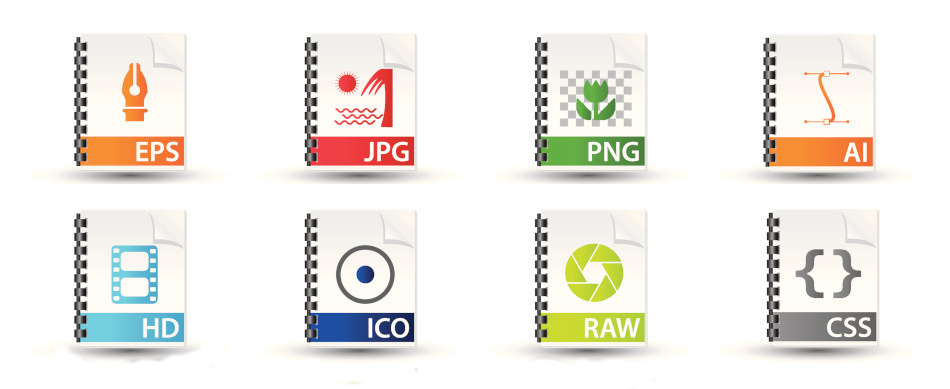
If you've ever redesigned a website or made one from scratch, you know the web design process is part art and part science. A great finished website balances artistic decisions with technical optimizations that make it fast and easy to use. The image file formats you use can impact both of these points.
The most common file formats used for images online include:
- JPEG
- GIF
- PNG
- WebP
Some file formats are smaller and load faster, but require simpler color palettes that might not suit your branding. Others support animation or transparency, but have much larger file sizes that will be slower to load, potentially impacting your website's SEO profile. The file format you choose should be based on the goals of your web design and digital marketing strategy.
Let's talk about how these four file formats differ, and the advantages and disadvantages they can bring to your next project.
1. JPEG
The JPEG is the most basic version of a photo and probably the one you encounter most often, because it's used everywhere. The JPEG format is great for photos of people and images with a lot of different colors, while still offering small file sizes due to its use of advanced compression algorithms.
If you're trying to maintain a lot of detail in a photo without a big file size, the JPEG is your best bet—but it's not ideal for every situation. JPEGs do not support transparency, where certain parts of your image are "see-through," revealing whatever is behind the image. This format does not support animation, either.
When dealing with straight lines, such as letters, you may notice “noise” around the lines when saving a file with a high degree of compression. This is because of JPEG's lossy compression algorithm, which discards redundant or less important information. You will likely have to strike a balance between image quality and compression levels when saving images of this nature.
Key JPEG Advantages:
- Supports a lot of colors and detail
- Lossy compression allows for smaller file sizes
Key JPEG Drawbacks:
- Non-transparent
- Non-animated
- Not ideal for images with a lot of straight lines
2. GIF
The GIF is a simple, older style file format containing up 256 colors, which makes them more suited to logos and branding than high-quality photos. Featuring lossless compression, the GIF format allows for more sharpness around straight lines compared to a JPEG; images or frames can also be strung together into short animations favored by those on social media and messaging apps.
Note that while GIFs are generally small files, animated GIFs—especially those featuring a lot of frames or colors—can get large quickly, so keep that in mind if you're planning on using a social media GIF on your website or in an email, for example.
Key GIF Advantages:
- Small color palette means smaller file sizes
- Lossless compression allows for smaller files
- Supports animation
- Better at handling straight lines
Main GIF Drawbacks:
- Limited colors
- Limited transparency

3. PNG
The PNG format is great for sharp, transparent images. It allows for color to the level that the JPEG does, and captures straight lines like the GIF does. However, the PNG is where you will start to see file sizes increase, sometimes past acceptable limits.
There are two commonly used versions of the PNG: PNG-8 and PNG-24.
PNG-8 images support 256 colors like GIFs, and can also designate a single transparency color. This is helpful for creating images with simple transparency, such as icons or logos with clear, solid background colors.
PNG-24 images support "true color," which means it can display millions of colors (24 bits per pixel). It can accurately represent complex images with a wide range of colors. It also supports full alpha transparency, allowing each pixel to have variable levels of transparency, making it suitable for images with soft edges, gradients, or complex transparency effects. This PNG format is the largest, limiting its use to mainly professional graphic design and photography.
Key PNG Features:
- Can support a lot of colors
- Supports transparency
- Good with straight lines
Main PNG Drawbacks:
- Non-animated
- Large file sizes
4. WebP
WebP is one of the newest image formats available to web designers. Developed by Google with the aim of providing efficient compression and high-quality image display online, WebP is quickly becoming a preferred online format, especially for websites demanding fast load speeds. (And what site doesn't these days?)
WebP employs both lossy and lossless compression techniques. In lossy mode, it can achieve smaller file sizes compared to JPEG with comparable image quality, making it an excellent choice for web optimization tasks. In lossless mode, WebP images can preserve image quality perfectly while still offering smaller file sizes compared to formats like PNG-24.
The WebP format also supports transparency and animation, making it something of a Swiss Army knife for online images. Perhaps the biggest drawback is its relative newness; some older browsers may require fallback formats to ensure compatibility.
Key WebP Features:
- Brings the best of all worlds in terms of image quality, compression, and speed.
Main WebP Drawbacks:
- Legacy issues with older browsers or design software
If you need assistance choosing the right image file formats or optimizing images for your website, contact the expert design team here at Informatics. We're ready to help you create an online presence that wows your clients and keeps them coming back.
Ready for a new format?
Our expert designers and developers can give your site the speed it needs.
